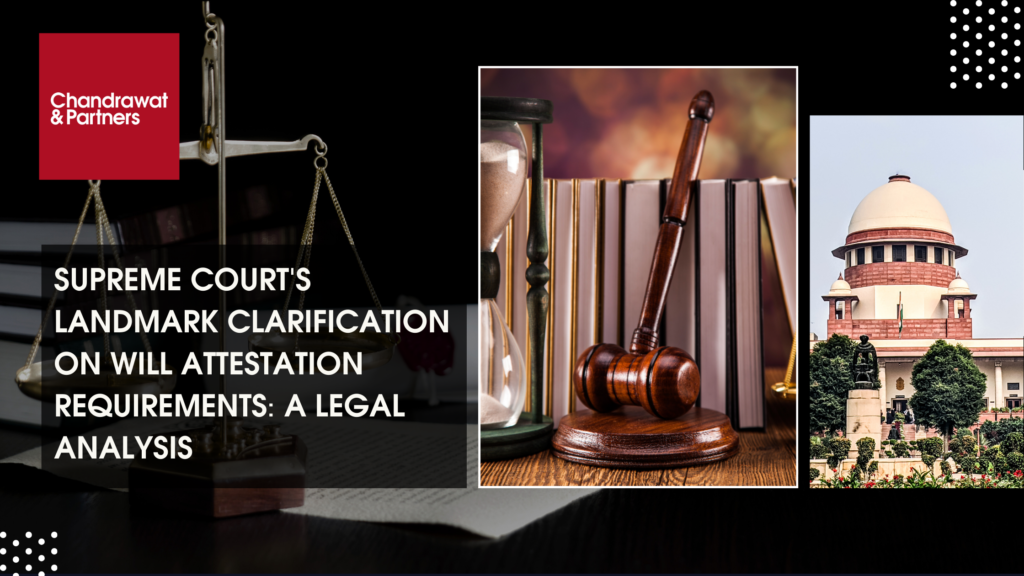Home > Recent Judgements > Supreme Court’s Landmark Clarification On Will Attestation Requirements: A Legal Analysis
Jan 07, 2025
INTRODUCTION
In the landmark case of Gopi Krishan & Ors.vs Daulat Ram& Ors, the Supreme Court of India has delivered a significant judgment that brings much-needed clarity to the interpretation of Section 63 of the Indian Succession Act, 1925. The case addresses a fundamental question in testamentary law: what kind of attestation is lawful to a will? This decision is even more relevant as it enhances the legalization of wills while making the procedure of their execution less complicated.
As it has been specified, the present case relates to a claim under the law of property which concerns the question of the validity of the will produced in 1981. Before the death of the testator, it is normal to have a will intended to be implemented in favour of certain beneficiaries but after the death of the testator there were disputes over the proper attestation of the will. There was a contention whereby it was asserted that the attestation did not complies with Section 63 of the Indian Succession Act, more so the witnesses did not sign each other.
“Section 63 of the Indian Succession Act, 1925 The provision states that a will must be attested by two or more witnesses, each of whom must have seen the testator sign or affix their mark to the will”.
KEY ISSUES
- Whether the plaintiffs have the legal standing (locus standi) to file the present suit?
- Whether Section 63 of the Indian Succession Act, 1925 mandates that witnesses must see each other sign during the attestation of a Will?
- Whether the simultaneous presence of all witnesses at the time of attestation is a mandatory requirement for the valid execution of a Will?
JUDGMENT
The Court stated that Section 63 of the Indian Succession Act requires each witness must see the testator signing or putting his mark on the will. The bearing of witnesses is not required to see each other sign the attestation.
The basic characteristic is the actual seeing by each of the witnesses of the performance of the act of signing the will. Each attestation is sufficient when every witness has his or her attestation placed next to the testator’s signature and the witness has signed the document.
OBSERVATION
The Court pointed out that the principal role attributed to attestation is acts as evidence of the fact that the will has been executed voluntarily by the testator. Much more emphasis must be put on creation of this core element rather than other means that are not directly related to it.
The Court pointed out that the essence of section 63 was to safeguard the genuineness of the executed documents to the testator, rather than erecting various forms of technicalities in will. It should therefore endorse realisation of the plan with sufficient and appropriate precautions.
The Court understood that it could be practically cumbersome to give witnesses an opportunity to see each other’s attestation particularly where it might be impractical to summon all the witnesses at once.
The Court held that, themselves witnessing the testator signing destroys the will, has sufficient evidentiary value without the testator’s witnesses observing each other.
This decision of the Supreme Court is reasonable to both uphold the legislative carrying of a will while not unfathomably including practicality. Overall, this judgment will likely continue to shape testamentary law in India since making the will execution process more accessible does not negate the role of a will in providing protection.
For more information or queries, please email us at
enquiries@chandrawatpartners.com





